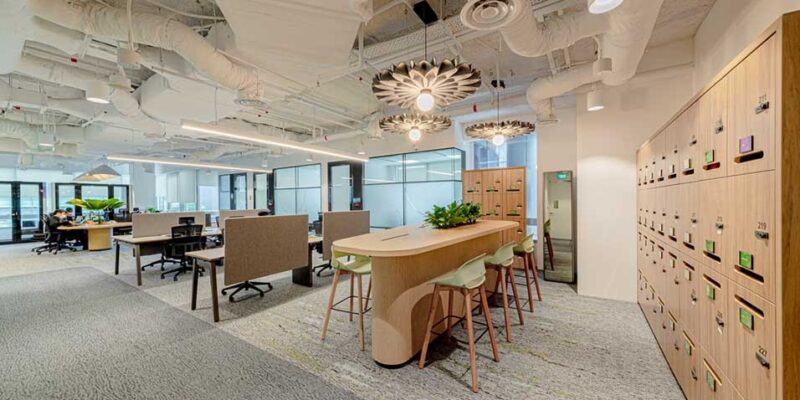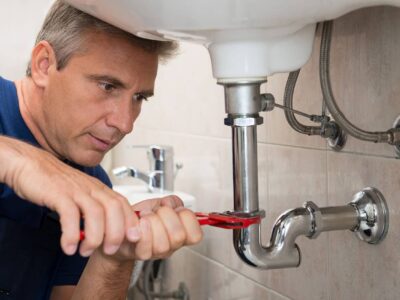The manufacturing landscape transforms at unprecedented speed. Artificial intelligence, Industry 4.0 integration, and automation reshape how work gets done. Yet many facilities invest in rigid infrastructure that becomes obsolete within years. Smart manufacturers recognize that future-proofing workspaces requires adaptable design that evolves with technological change.
The Pace of Change
Manufacturing technology advancement accelerates continuously. What seemed futuristic five years ago now represents standard practice. 3D printing, collaborative robots, and IoT sensors integrate into everyday workflows. This rapid evolution makes fixed infrastructure investments increasingly risky.
Traditional workspace design focused on optimizing for current processes. Today’s smart approach designs for flexibility, anticipating change rather than reacting to it. This philosophical shift requires different materials, construction methods, and planning approaches.
Modular Infrastructure Advantages
Modular design principles create workspaces that adapt to changing requirements. Standardized components allow rapid reconfiguration without major renovations. This flexibility proves particularly valuable as manufacturing processes evolve and new technologies emerge.
Experienced manufacturers understand these principles intimately. Companies like Actiwork, with decades of industrial experience, develop solutions that anticipate change. Their modular approach recognizes that today’s optimal layout may be tomorrow’s constraint.
Component standardization reduces long-term costs while maintaining flexibility. Common connection systems, universal mounting points, and standardized dimensions allow mixing and matching components as needs change. This approach maximizes investment protection while supporting evolution.
Technology Integration Planning
Future-proofing requires anticipating technology integration needs. Power distribution systems must accommodate increasing electrical loads from digital tools and automation equipment. Network infrastructure needs capacity for expanding connectivity requirements.
Workspace design must accommodate both current tools and emerging technologies. Workstations need flexibility to support traditional hand tools alongside digital interfaces. Storage solutions, including computer cabinet systems, must handle conventional parts and specialized technology components.
Cable management becomes increasingly critical as technology integration expands. Robust cable management systems prevent workspace clutter while maintaining connectivity. These systems must accommodate both current requirements and future expansion needs.
Collaborative Human-Machine Workspaces
Automation doesn’t eliminate human workers—it changes how they work. Future workspaces must accommodate collaborative robots, automated guided vehicles, and human-machine interfaces. This requires rethinking traditional workspace layouts and flow patterns.
Safety considerations evolve with technology integration. Workspaces must accommodate safety sensors, emergency stops, and automated safety systems. These requirements influence everything from lighting design to workspace geometry.
Ergonomic considerations become more complex as workers interact with both traditional tools and digital interfaces. Workstations must support comfortable use of tablets, computers, and specialized control systems alongside conventional manual work.
Data-Driven Workspace Optimization
Future manufacturing workspaces generate vast amounts of data about usage patterns, efficiency metrics, and performance indicators. This data enables continuous optimization and evidence-based improvements. Workspace design must accommodate sensors and data collection systems.
Analytics capabilities allow real-time workspace optimization. Understanding how spaces are used enables better layout decisions and identifies improvement opportunities. This data-driven approach provides competitive advantages through continuous refinement.
Predictive maintenance extends to workspace infrastructure. Monitoring systems can anticipate maintenance needs, preventing downtime and extending equipment life. This capability becomes particularly valuable as workspaces become more complex and technology-dependent.
Environmental Adaptability
Climate change and environmental regulations influence workspace design requirements. Future workspaces must accommodate changing environmental conditions while maintaining efficiency and comfort. This includes both indoor climate control and outdoor environmental challenges.
Sustainability considerations increasingly influence design decisions. Energy-efficient systems, renewable materials, and waste reduction strategies become evaluation criteria. Future-proofing includes environmental responsibility as regulations and expectations evolve.
Resource efficiency becomes more critical as costs increase and availability fluctuates. Workspaces must adapt to changing resource constraints while maintaining productivity. This requires flexible systems that can optimize for different operating conditions.
Workforce Evolution
Australia’s manufacturing workforce continues evolving, with changing demographics and skill sets. Future workspaces must accommodate aging workers, increasing diversity, and evolving job requirements. This influences everything from ergonomic design to technology interfaces.
Skills development requirements change as technology advances. Workspaces must support both traditional apprenticeships and digital skills training. This dual requirement influences workspace design and equipment selection decisions.
Remote work capabilities become increasingly important, even in manufacturing environments. Workspaces must support digital collaboration tools and remote monitoring capabilities. This trend influences communication systems and workspace connectivity requirements.
Investment Protection Strategies
Future-proofing requires balancing current needs with future flexibility. Over-engineering wastes resources, while under-engineering creates constraints. Successful strategies identify core requirements that remain stable while building flexibility for changing elements.
Standardization provides protection against obsolescence. Common components, universal interfaces, and standardized dimensions allow easier upgrades and replacements. This approach reduces long-term costs while maintaining capability.
Phased implementation allows gradual adaptation to changing requirements. Begin with foundational elements that provide flexibility, then add specialized components as needs become clear. This approach minimizes risk while maximizing adaptability.
Partnering for Success
Future-proofing complex workspaces requires expertise in both current requirements and future trends. Partnering with experienced suppliers provides access to industry knowledge and proven solutions. These partnerships become particularly valuable as technology complexity increases.
Experienced suppliers understand the balance between current needs and future flexibility. They provide guidance on investment decisions and help avoid costly mistakes. This expertise becomes increasingly valuable as options multiply and stakes increase.
Conclusion
Future-proofing manufacturing workspaces requires strategic thinking that balances current efficiency with future adaptability. Modular design, technology integration planning, and flexible infrastructure create workspaces that evolve with changing requirements.
Success in future-proofing requires recognizing that change is the only constant in modern manufacturing. Workspaces designed for adaptability provide competitive advantages through continuous evolution and optimization.
The investment in future-proofed workspaces pays dividends through extended useful life, reduced renovation costs, and improved operational flexibility. For manufacturers committed to long-term success, adaptable workspace design isn’t optional—it’s essential for surviving and thriving in an ever-changing landscape.













Comments